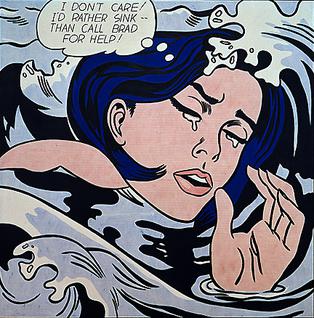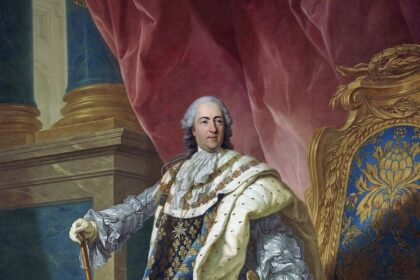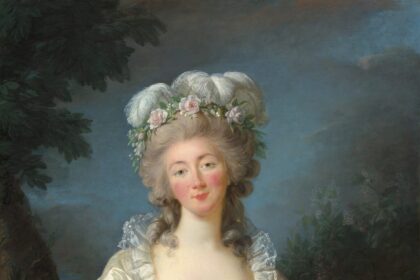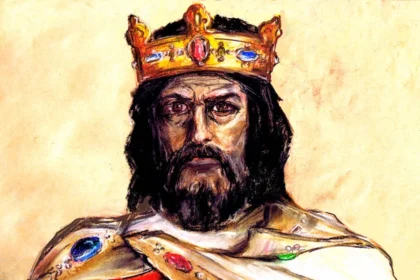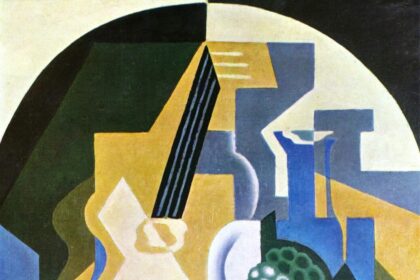Pop Art is one of the most recognizable art movements of the 20th century. It has captivated audiences with its bold colors and playful imagery since it first became popular in the 1950s.
Pop Art is often associated with celebrities, comics, and mass-produced items. But there’s a lot more to it than meets the eye. Take a look inside Pop Art’s colorful history to learn what makes this movement so unique and influential.
We’ll cover how Pop Art was born, how it became popular, which styles are associated with it, and the most famous Pop Art works. We’ll also uncover why Pop Art has become so iconic and discuss some of its most important figures. By the end of this article, you’ll have a better understanding of this vibrant art form and why it still speaks to people today.
Pop Art’s Origin and Influence
Pop Art is a visual art movement that developed in Britain and the United States in the 1950s. It was among the most influential art movements of the 20th century, taking inspiration from popular culture, mass media, and consumerism. The style of Pop Art was characterized by its bold colors, flat shapes, and pop imagery, often incorporating images of celebrities and everyday objects.
Pop Art emerged in response to World War II and its aftermath. Artists sought to capture the spirit of optimism that society had regained after years of conflict and upheaval. By combining vibrant colors, comic-like visuals, and references to mass media culture, Pop Art provided an escape from reality that appealed to people of all ages.
Today, Pop Art continues to influence people all over the world. Its bright colors and emotional themes have become popular in many different forms of visual media such as graphic design, animation films, video games and more. Its timeless energy still has an impact on today’s art enthusiasts who appreciate its unique combination of nostalgia and modernity.
Notable Pop Art Artists

Pop Art was an international movement, with some of its most influential artists coming from the United States, Great Britain, and other countries. Some of its most famous progenitors are Andy Warhol, Roy Lichtenstein, Claes Oldenburg, Peter Blake, and David Hockney.
When it comes to American Pop Art artists, Andy Warhol is arguably the most renowned for his prolific production of prints and paintings. Most famously known for his iconic portraits of Marilyn Monroe and Campbell’s Soup Can painting series, Warhol further popularized Pop Art through the incorporation of silk screening techniques.
Roy Lichtenstein was another prominent American Pop Art artist who is widely recognized for his cartoon-style paintings including “Oh Jeff…I Love You Too…But” and “Whaam!”. He created a unique visual language by combining comic strip frames with Ben-Day dots in bright colors to convey an emotional narrative.
In addition to these iconic figures, other notable Pop Art artists include British painter Peter Blake who collaborated with The Beatles on their innovative album cover designs; Claes Oldenburg who created various large-scale sculptures in soft materials; and David Hockney whose photomontage works featured landscapes and figures in a two-dimensional composition.
Major Symbols of Pop Art
Pop art is renowned for its bold and bright use of colors, as well as its iconic symbols. Here are three of the major symbols that have been associated with Pop Art throughout history.
Roy Lichtenstein
One of the most recognizable representations of Pop Art is the work of Roy Lichtenstein. His artwork was characterized by his use of comic book imagery, bright colors, and bold lines. He often portrayed everyday objects or expressions in a humorous manner, turning them into works of art.
Andy Warhol
Another major player in the history of Pop Art is Andy Warhol. His works are known for their vibrant colors and strange depictions, such as his famous Campbell Soup cans series. Unlike Lichtenstein’s work however, Warhol’s pieces were often more abstract, placing emphasis on the power of form rather than details.
Jasper Johns
Jasper Johns’ artwork was characterized by his heavy use of symbolism and pure shapes to create pieces that were simple yet powerful. His works are often seen as being more direct than those by Warhol or Lichtenstein; they depict objects such as flags or targets that appeal to a more universal audience, creating a timelessness in their work.
Postmodernism & Its Impact on Pop Art
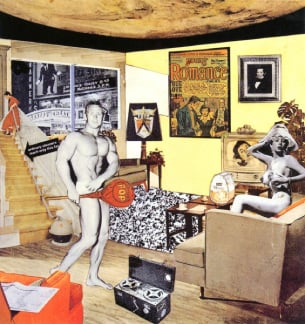
Pop Art is rooted in post-modernism – which was an art movement that rejected the idea of “high art” and instead embraced the everyday objects and images often found in advertisements and pop culture. The movement encouraged artists to experiment with different mediums, techniques, and subjects to create something entirely new.
Post-modernism had a huge influence on Pop Art as it provided a platform for artists to challenge conventional ideas about art and to use popular culture as their medium. Many Pop Artworks are characterized by bold colors, humor, and irony – all of which can be attributed to the post-modernist approach.
By introducing elements of contemporary culture into artwork, Pop Artists blurred the boundaries between “high” and “low” art, suggesting that anything could be translated into works of art if approached from a creative angle. This bold approach paved the way for future generations of artists who have been inspired by Pop Art’s vibrant colors and innovating methods.
Themes in Contemporary Pop Art
Contemporary Pop Art has themes and styles intended to comment on the social and political issues of our time. One such example is the work of British artist Damien Hirst, who is known for using symbols and imagery in his art for making commentary on media coverage, consumer culture, and politics. His works often feature words written in bold fonts combined with striking colors, commentating on social issues like gun control and celebrity culture.
Another style that has become popular in contemporary pop art is abstract expressionism. Artists like Jean-Michel Basquiat used this style to convey ideas about identity, racism, and popular culture. His works often feature bright colors combined with expressive brush strokes that create a sense of movement or emotion.
Finally, Pop Art also incorporates elements of street art. Artists like Banksy have used graffiti to make statements about society, politics and culture by combining captivating visuals with thought-provoking messages. His controversial works have been both praised and criticized for their humorous yet meaningful images that draw attention to social issues such as war and poverty.
Capturing Pop Art in Everyday Life
Pop Art has become more than just a visual art form. It’s everywhere, in music and movies, everyday objects, and now in fashion. Its bright colors and bold images are used to make a statement, no matter the medium. Now, it is not just art – it is a way of living.
Apparel
From streetwear to high-end designer apparel, you can find bright colors and exaggerated shapes in the clothes we wear every day. Pop Art utilizes these characteristics to create eye-catching clothing that is timeless yet modern. Its vibrant colors, geometric patterns, and fun motifs add life to any ensemble. You can explore how different artists have incorporated these elements into their creations when shopping for your wardrobe.
Home Decor
Pop Art also has its place in the home decor industry. There are many ways you can capture the essence of Pop Art in your home – from furniture that features bold colors and designs to art pieces that incorporate iconic images of the 60’s pop culture scene. The possibilities are endless if you look around for items with a Pop Art feel – be it a show-stopping wall hanging or unique storage containers with retro imagery printed on them!
From clothing to home decor and more, Pop Art has become an integral part of our lives today. Its influence on culture transcends generations and continues to be relevant in today’s changing world.
Pop Art has often been celebrated as an art form that brings life and individual expression to everyday objects and experiences. As we have seen, Pop Art is rooted in the juxtapositions of culture, art and society, and its impact on the art world was revolutionary. From its inception, Pop Art has enticed audiences and influenced generations of creatives to find joy in the world around them. From the early works of Andy Warhol to the more contemporary pieces of Banksy, Pop Art continues to inspire, offering an alternative view of the world and all its glory. As we continue to explore the art, let’s remember to embrace the beauty of our everyday lives and to see the wonder in seemingly ordinary objects.
